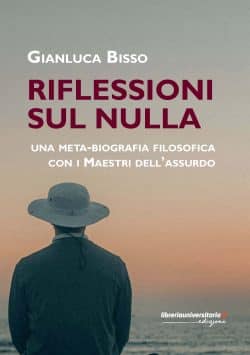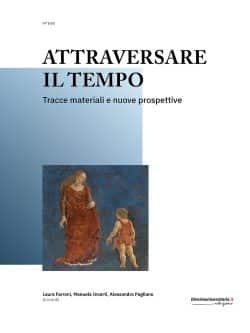Indice
Nine and a Half Theses for Philology in the Liquid Digital Age.
Returning to an old form of argumentation, the article proposes nine theses, and a corollary, on the characteristics and functions of philology in our current environment. They are in particular: Philology is primarily defined in relation to the texts it studies, and only secondarily in relation to the method used to study them. The text has always been fluid; the perishability of the digital text is compensated by the increased output of its production. The author has often had uncertain lines of development; but the scholarly editor must have these same lines clearly in mind. Quantitative is nothing but poor qualitative. Philology is not data-driven (because good science is not). The functions of the philologist include showing that much of what seems new is actually old, and much of what seems old is actually very recent. One of the functions of philology is to show that making the past topical is often illicit. In textual philology, innovation, improvement and evolution are clearly distinct and non-superimposable concepts. Presentism is radically incompatible with philology.
Critical (Lachmannian) Editions – a More or Less Digital Future? Reflections, New and Old
Against the opinion (false, to my mind) that Lachmannian textual criticism consists only in outdated technicalities, other voices, much more authoritative, but perhaps unheeded and certainly less mainstream, support the contrary view. Among the numerous aspects of this debate, by no means secondary is the constitution of digital text and apparatus in cases of complex recensio: between the extremes of a Lachmannian selective apparatus, and of a Bédier-style “democratic” one, the rules for a comprehensive digital apparatus remain to be created, and the enormous technical problems of tagging cannot and must not obscure the quintessentially scientific ones of the critical approach. With a series of operational reflections on two case studies (Cicero and Seneca the Philosopher), I try to trace a pathway that, while keeping a proper distance from any antiscientific, anticritical, antilachmannian, descriptive and genetic drift, makes it possible to find, if one exists, a principium individuationis of the digital edition, with repercussions backwards, so to speak, on the choice of variants in the apparatus as traditionally printed.
The Critical Digital Edition: Textual Criticism within the History of the Tradition
The traditional output of philological work aiming at the constitutio textus is the print critical edition with apparatus footnotes showing select variant readings. The digital scholarly edition, instead, is not constrained by the space limits of the printed page, so it can encode and visualize synoptically many versions of a text, as found in different textual witnesses. This opportunity has often been exploited by New Philology editions, in which textual versions are juxtaposed without any attempt to reconstruct an “original” text. However, the digital critical edition can constitute a “third way” between constitutio textus and New Philology: the digital editor can provide different versions of a text from individual witnesses and add a further version, the editor’s own textus constitutus, thus putting Giorgio Pasquali’s “critica del testo” in the framework of the “storia della tradizione”.
The editorial principles associated with the publications of the Arnamagnæan Institute in Copenhagen and its sister institute in Reykjavík have generally been attributed to Prof. Jón Helgason, founder and head of the Arnamagnæan Institute and general editor of the series Editiones Arnamagnæanæ and Bibliotheca Arnamagnæana. The present article argues that the method, which is essentially Lachmannian with respect to the recensio, insisting on an examination of the entire tradition, but Bédiérist in the constitutio, presenting the text of a single codex optimus with as little emendation as possible, can be seen as Jón Helgason’s reaction to the practices of his predecessor, Prof. Finnur Jónsson.
Critical editions generally belong to what may be described as the reconstructive type of editing. They usually have strict procedures for the selection of readings, “la constitution des leçons”, but, perhaps, more lenient rules for the linguistic form of the edited text, “la constitution du langage”. Vernacular editions on the whole face a particular challenge with respect to the latter case. Two examples will be discussed in some detail illustrating both types of constitution: the Old Icelandic Hrafnkels saga Freysgoða and the Old Norwegian Barlaams saga ok Josaphats. Finally, an explanation will be offered for the change of focus in Medieval Nordic editing, and the redefinition of what constitutes a critical text edition.
Philology of the Italian Opera between Text and Event
Abstract
The paper discusses the guidelines on which current critical editions of operatic music are based, with particular reference to the nineteenth-century Italian opera. The basic principle, gradually acquired by decades of experimentation, is that the sources, rather than documenting the transmission of a text given once and for all, record the traces of a series of performative events that have occurred in the historical life of the work, even beyond the will of the authors. Operatic editions should account for this temporal dimension, and at the same time offer a text that can be used in today’s theatrical practice; lacking this requirement, the economic sustainability of such editorial enterprises will fail. These criteria are illustrated with the example of the edition, in progress but already employed for performance, of the first opera of Vincenzo Bellini, Adelson e Salvini (1825).
The project Editer Numériquement la Littérature Apocryphe Chrétienne (ENLAC), which we are presenting here, aims at producing critical digital editions of a few Latin or Greek Christian apocryphal writings. The project will also provide a suite of interconnected tools, existing or new, for computer-assisted critical editing of works preserved in complex textual traditions. The tools will be open-source and the editions produced will be openaccess. In this article we are explaining the first steps of the process, i.e. the preparation of transcriptions
of each manuscript and their collation by CollateX in the form of a variant-graph. In the next steps the variant-graph will be transferred in Stemmaweb, which will
be used to produce the critical editions. Taking the example of the Greek Acts of Barnabas (fifth century), preserved in twelve manuscripts, we are illustrating
the principles that we followed for our diplomatic transcriptions in XML-TEI. Some peculiarities of mediaeval Greek manuscripts and how we are dealing with
them, are presented, such as word splitting, punctuation, abbreviations, and corrections.
After a brief introduction by Paolo Trovato, Marchetti outlines the state of the art, evaluating methodological approaches for the investigation of “scribal habits” which are shared by the New Philology and biblical philology. He then gives a demonstration of the methods and procedures he employed in his doctoral thesis, introducing – although partially – significant statistical evidence.
Who Composed the Penelope? On the Authoriality of a Late-18th-Century Melodrama
The textual tradition of Penelope, an opera seria written in 1795 by Giuseppe Maria Diodati and Domenico Cimarosa, reflects not only the creative project of the original authors, but also those of others who modified the score over time. Particulary notable in this sense is the case of the contralto Giuseppina Grassini (1779-1850) who sang the title role several times between 1795 and 1803. Reconstructing some of the changes effected by her, I seek to explain why this singer should herself be considered one of the main authors of Penelope.
Genetic Editions and Strategies of Digital Visualization. A Prototype for Beethoven’s Quartet Op. 59, No. 3
The position occupied by genetic editions in the field of musical philology, after the so-called digital turn, remains slightly marginal. The project Beethovens Werkstatt: Genetische Textkritik und digitale Musikedition, working only on this topic, represents an exception. The prototypical edition presented here as a case study focuses on just two bars (bb. 34-35) of Beethoven’s quartet op. 59, no. 3, II mov. and analyses the different textual stages elaborated by the composer on the autograph. The experiment checks some digital visualization strategies with the aim to make philological communication more effective, guaranteeing a multi-perspective concept and respecting the coherence of each argumentative level.
This article conducts a reasoned survey of classical Latin literature online, as of early 2019. Through an overview of the types of digital texts that are currently available, it seeks to offer a snapshot of media change in progress and to assess in quantitative and qualitative terms the current presence of classical Latin literature on the Internet. It closes with some reflections on the factors that have influenced the diffusion of classical Latin texts in the digital medium, and makes some recommendations for the future development of this medium.
From Print to Digital Texts, from Digital Texts to Print. Indirect Tradition of Latin Classics on the Web
This article investigates the quotations of ancient Latin authors on the Web with the methodology developed by classical and medieval philology in the study of indirect tradition. The first part of the paper focuses on the most prominent online collection of quotations, Wikiquote. It analyses the internal structure of Wikiquote’s entries, the ways in which users cite their sources, and the various kinds of errors in the text as well as in the attribution of the quotations. The comparison with ancient and medieval lexica and collections of sayings leads to the identification of the main
methodological flaws of the project.
The second part of the article deals with three case-studies of misattributions of Latin extracts, occured in printed publications and amplified by the online circulation. Accordingly, it can be argued that the digital and online indirect tradition of classical works shows the same kinds of textual corruption which the philology has already identified in works transmitted by manuscript and printed witnesses.
Obsolete Progress? Digital Ups and Downs of the Chanson de Roland and the Cantar de Mio Cid.
The online transmission of medieval Romance epics provides a good example of a well-known paradox: in many cases, the most advanced technology for text transmission makes available only outdated editions. This paper takes into account two case studies emblematic of two different aspects of this contradiction. 1. The example of the Chanson de Roland shows that not only Wikisource but also academic websites contribute to the dissemination of obsolete editions; added to this is the fact that a printed volume, copied from one of these ‘digital’ texts, has inherited peculiar errors produced during the process of digitization. 2. The analysis of the digital-born edition of the Cantar de Mio Cid takes the problem of obsolescence even further: in this particular case, a technically perfect website hosts a text edited with a philologically outdated method.
Fake Texts and Wiki Editions. For a Sustainable Digital Philology.
At what extent we can trust on digital literary texts? And who really uses the scholarly editions projects made on the web? Through some case studies and didactic projects, this paper makes a reflection on the state of Digital Philology, the impact of scholarly editions and the validity of philological tools for our disciplines. Some practical examples are eventually offered as proposals of “sustainable” philology.
The Narration of History in Wikipedia: Practices, Ideologies, Conflicts about Memory in the Free Encyclopedia
The constantly renewed tools of philology enable the reading and interpretation of digital texts and hypertexts on several levels. Wikipedia entries, as investigated from this perspective, offer an interesting picture of conflicting narratives about historical events.





